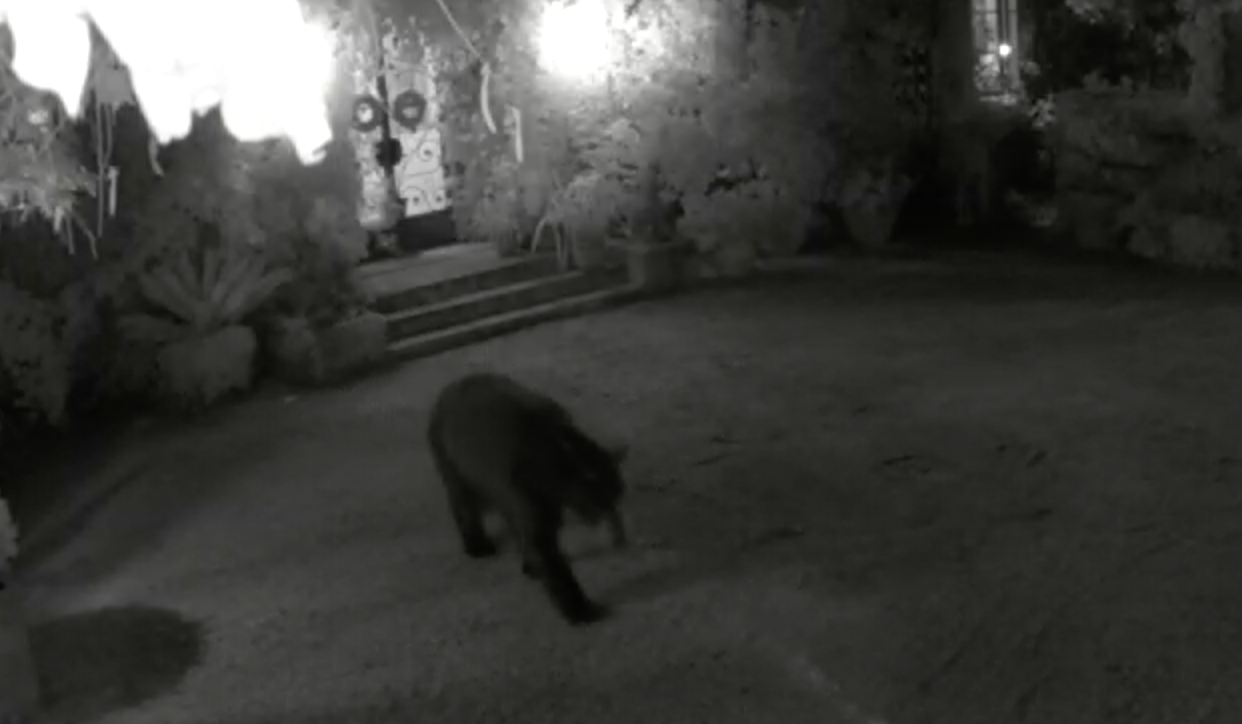The Bear is Back. Time for Montecito to Get Serious About Co-Existence — or Euthanasia.

Our autumn bear has made a roaring spring appearance. Sheriffs saw him on Romero Canyon Road at the end of April. Neighbors reported the bear hit chicken coops in the Oak Grove area at the beginning of May, where he also dined on guinea pigs.
He hit our board member Penny Bianchi’s place at East Valley near the Ennisbrook Trail on May 7 and got eight of her chickens. He came back that night, but Penny had put the remaining chickens in the garage. Then the bear (or another one) was seen in the Jameson Lane area near La Vereda Lane — in backyards and in broad daylight.
Clearly, it’s spring, the bears are coming out of hibernation, and they’re hungry. They’re like anything else: looking for the easy button. It turns out quite a few people in Montecito keep bees, bunnies, guinea pigs, and chickens — all of which are fast meals for hungry bears.
From our Town Hall with California Fish and Wildlife back in November, when we first started encountering the bear around the Romero Canyon and East Valley area, we were told that relocating bears to other areas is no longer an option. The reason? Bears are very territorial, like hawks, owls, and mountain lions. They will claim a territory and hunt exclusively within it. Other animals of their kind attempting to invade the area will be attacked and driven out.
Unfortunately, none of these creatures provide us with convenient maps of their territory. So, a relocated bear dropped unwittingly into another bear’s territory immediately finds itself attacked and mauled. There is only so much food within a territory claimed by a bear, so invaders are promptly run out. Nature tends to be rather efficient.
Then the relocated bear will try to find its way back to its original territory. On the way, it will likely be shot by hunters or run over.
Thus, relocation is a death sentence for a bear.
The only other option for a nuisance bear is euthanizing in the community. We’ve heard a tremendous amount from Montecito neighbors who do not want to see that happen.
There are strategies to bear-proof your home. These include electrifying coops that keep live animals out, placing floodlights that come on when triggered by motion (bears don’t like bright lights), and sirens that are triggered by motion (bears don’t like loud, startling noises). Pellet guns are also an option, as bears are not likely to revisit a place where they’ve been stung. Banging pans is an option, to create a startling noise.
When you camp in the Sierras, and I’ve done this extensively, there are always bear boxes for storing food. These are heavy, anchored boxes that have difficult-to-operate latches. There are also bear-proof trash cans. The Sierras host many bears, and these mechanisms work to limit human contact with them.
We either need to learn how to better bear-proof our homes to discourage the bear(s) visiting here or euthanize them. Bear-proofing is not expensive and leads to a more humane outcome.
Rebecca Barboza, the wildlife biologist, and Tim Daly, a public information officer, will be joining us for a Town Hall on more preventative bear strategies. You’re welcome to attend! It’s May 19 at 5:30 pm via Zoom, so there’s plenty of free parking. Email info@montecitoassociation.org for registration information.






